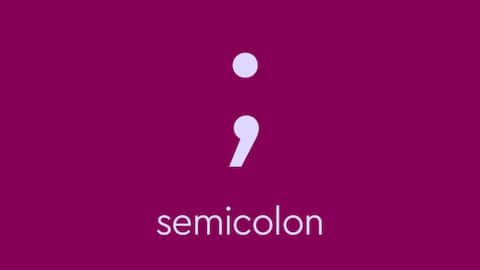Why semicolons are vanishing from modern English literature
What's the story
A new study reveals that semicolons have become increasingly rare in English literature over the last 20 years. The research shows that British authors have cut down their use of the punctuation mark by almost 50%, from one every 205 words in 2000 to one every 390 words today. The trend is in line with advice from famed author Kurt Vonnegut, who reportedly used less than 30 semicolons per novel.
Student survey
British students rarely use semicolons
A survey by Lisa McLendon, author of The Perfect English Grammar Workbook, found that 67% of British students never or rarely use semicolons. Only 11% identified as regular users. This trend led experts at Babbel, a language learning company that commissioned the original research, to conduct a semicolon quiz with the London Student Network. Over half of the students surveyed were unfamiliar with the rules for using semicolons, highlighting a decline in both understanding and usage of this punctuation mark.
Punctuation evolution
Semicolon: A historical perspective
First introduced by Aldus Pius Manutius the Elder in 1494, the semicolon has long been a subject of debate among grammarians. The Oxford Dictionary defines it as "a punctuation mark indicating a pause, typically between two main clauses, that is more pronounced than that indicated by a comma." Eats, Shoots & Leaves author Lynne Truss criticized its overuse as "dangerously habit-forming," while RL Stine's Goosebumps series features only one instance for every 200,000 words.
Advocates
Semicolon supporters and their literary impact
Despite the criticism, many authors have championed the semicolon. Abraham Lincoln once said, "I have great respect for the semicolon; it's a very useful little chap." Virginia Woolf's Mrs Dalloway employs over 1,000 semicolons to mirror its protagonist's stream of consciousness. Salman Rushdie is among other writers who have effectively employed an average of 300 semicolons for every 100,000 words in their works.
Resurgence
Semicolon usage shows signs of revival
According to the Google Books Ngram Viewer, which tracks word frequency in books, semicolon use in English increased by 388% between 1800 and 2006 before falling by 45% over the next 11 years. But, a gradual recovery started in 2017 with a reported increase of 27% by 2022. This data indicates that despite its recent decline, semicolons may make a comeback among authors and students alike.
